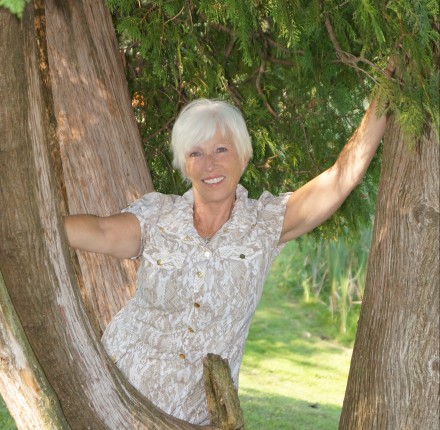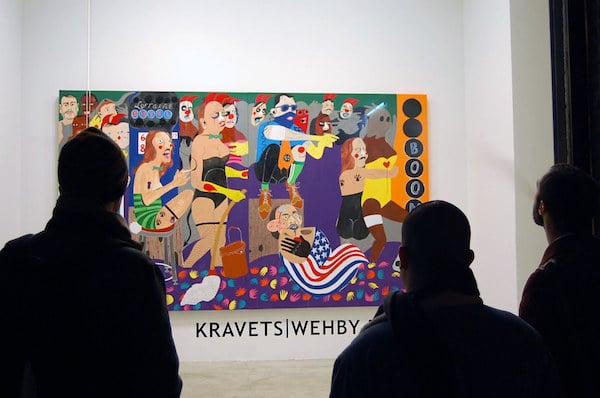When it comes to digital marketing, the “how” and “what” are changing by the day, but the “why” remains constant: you want to attract an audience, engage with them, and drive them to a particular action (or actions), such as spreading the word about you, attending your events, or purchasing your artwork. What’s the best vehicle for achieving these goals? We posed this question to a group of established artists (including one who used to oversee a tech firm’s social-media accounts), as well as to Digital Ecologist® and CHF’s Marketing Director Daniel DiGriz. Here’s what they had to say.

Amy Steinberg (artist): I spent five years as a social-media director for a technology start-up, so my views are probably a bit slanted due to that experience. Regardless of industry, I’ve found that what really matters is how much time and effort you put into the platform. Direct one-to-one engagement always wins when you are smaller and trying to attract customers.
This can be extraordinarily time-consuming for artists because it means you need to engage on an almost-daily basis if you want to build a good following with collectors, other artists, and fans. And, you need original content. Retweeting and re-posting from other feeds is not why people want to follow you or buy your art. If you can, set aside a few hours a day to post progress photos, short videos, and tips and tricks, and then respond to comments and questions. This is assuming you have no money for advertising.
Saatchi & Saatchi doesn’t work quite the same as Facebook, Twitter, or Instagram, so the time you spend engaging with customers is far less, but it is important to consistently post new work. Kelly Puisseger, for example, does a great job of posting often, and she sells quite a bit of art. She’s also cultivated relationships with the editors of Saatchi and has been in several of their email campaigns. This has helped her gain more fans and, subsequently, more sales.
I would not use Twitter to sell art because the platform is really better suited for “up to the minute” happenings. I do know artists who have been successful there, but it has taken years.
Facebook seems to work pretty well for artists who are willing to build a community around their work. Artists who sell their work, hold workshops around the country, and do online tutorials/classes are having the most success. Jane Davenport does pretty well on Facebook; she runs ads in addition to the content she adds.
Bette Ridgeway (artist): My website is my online gallery. Facebook and other social media are a great way to share images of work, but don’t count on sales. My best sales tool is the quarterly newsletter I sent out, which drives people to see my new work on the website—that, and having an annual open studio and sale.

Daniel DiGriz (CHF Marketing Director): Artists should view digital marketing as an important way to build an independent audience for their work. Your email list is your most valuable marketing asset, and you should be maintaining and building a list that is separate from that of your gallery.
Use social media and your website to grow that list. Create content that will drive visitors to your website and keep them there—everything from images of your work and press clips about you, to essays and blog posts about the backstory of a particular piece, and videos of you engaged in the creative process. People want to feel connected to what you do, and the digital sphere makes it easy.
Once they get to your site (and social channels, like Facebook, that allow you to embed forms), ask them to sign up for your email list. Use that list to attract fans and potential buyers: invite them to your openings and other events; create a regular e-newsletter to let them know about what’s going on in your studio; and encourage them to share all of this information with like-minded friends.

Jane Robinson (artist): With the overload of information, promotions, sales ads, and pop-ups on the web, people are much more selective with their time and what they read or explore further. Giving your collectors and audience a peek into your world is often intriguing for them. Write a blog, do videos, share behind-the-scenes photos (e.g., of your studio, etc). By building your brand, name and recognition, you will begin to see that collectors find you, rather than you having to chase sales.
For me, the best marketing and sales outlets remain high-end art fairs and exhibitions. I get to meet collectors personally, share information about my work and inspiration, and collect their contact information. After a show, my web stats skyrocket, and inquiries increase substantially. My second-best market is selling through reputable online galleries. While they take up to a 50% commission, I can ship directly from the studio–and often they pay shipping costs.

Watie White (artist): I use social media a lot, both for marketing for specific events (openings or public art, especially) but also in an attempt to give away as much of my content and art as I can (digitally). I show in-process images often, and share insights into how and why I am working in a certain direction. It’s been both a cost-effective alternative to postcards (although I love postcards) and an unobtrusive way to remain in contact with my ever-growing mailing list.
Ann Klefstad (artist): Early on in my web-gallery days, I was part of an online for-profit gallery start-up. We had a beautiful design and stellar artists, and we received a lot of press attention, but we sold very little art. I was also part of the mnartists.org start-up, which was originally planned as a nonprofit database/website to provide artists with a free web presence. Again, there were virtually no sales, although the site has developed wonderfully as an artists’ and arts-infrastructure hub: a source of critical writing, opportunities listings, and so on, along with its original purpose of providing artists with a web presence.

I have made very few sales from my website, but it is invaluable as a way to apprise potential commission clients of my work. (I don’t have a “store” as part of the site—only my contact information.)
The web is an incredible source of inspiration for artists—all of art history is simultaneously present!—and a wonderful way for artists to connect, as well as a way to show people what you do. Sales, however, seem to depend on a more sensory presence: in person, tangible, in conversation…that kind of thing. The worth of art, after all, is generally contextual; it’s found in its relationship to a time, a place, and a community. Otherwise, you can get stuff much cheaper at Target. What I see now is artists using the web as a clear adjunct to in-person relationships—particularly as a way to promote events and collaboration.
So it’s a mixed bag. I’d say you should talk to the artists who are in your personal community, find out what they do, and brainstorm ways of using the web—not just to create an individual arts presence but also a supportive arts community that has access to the economic infrastructure of your city.







